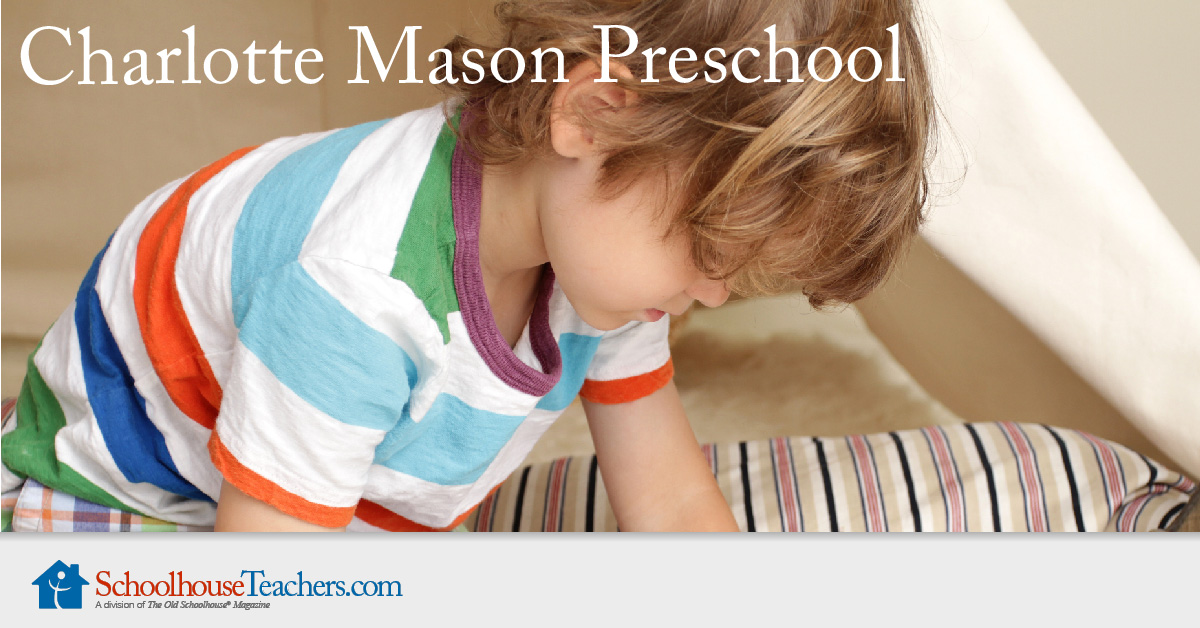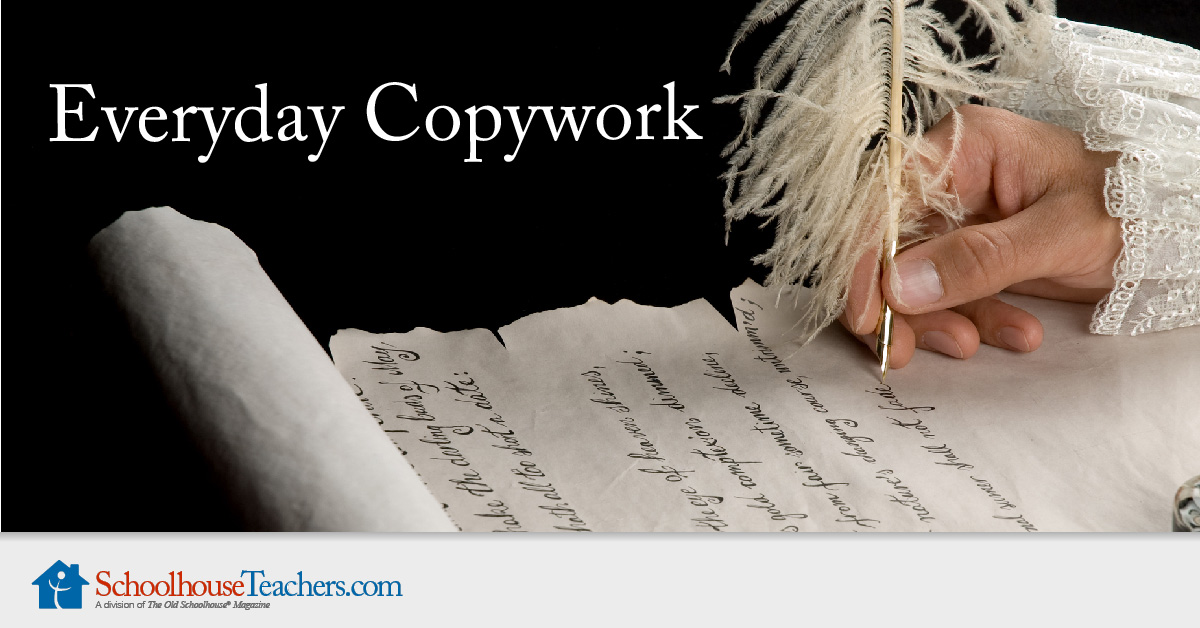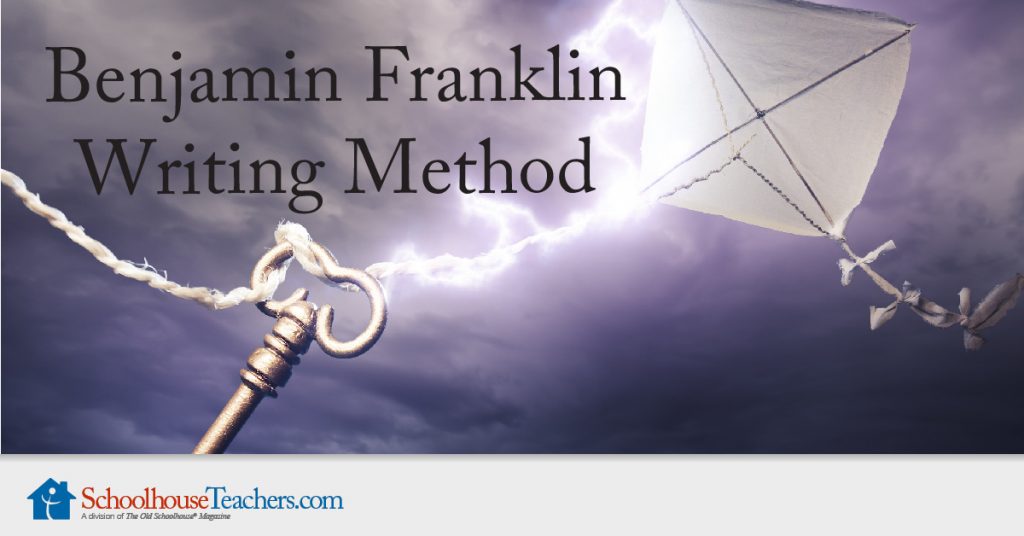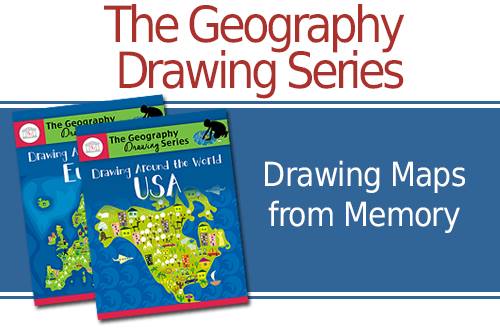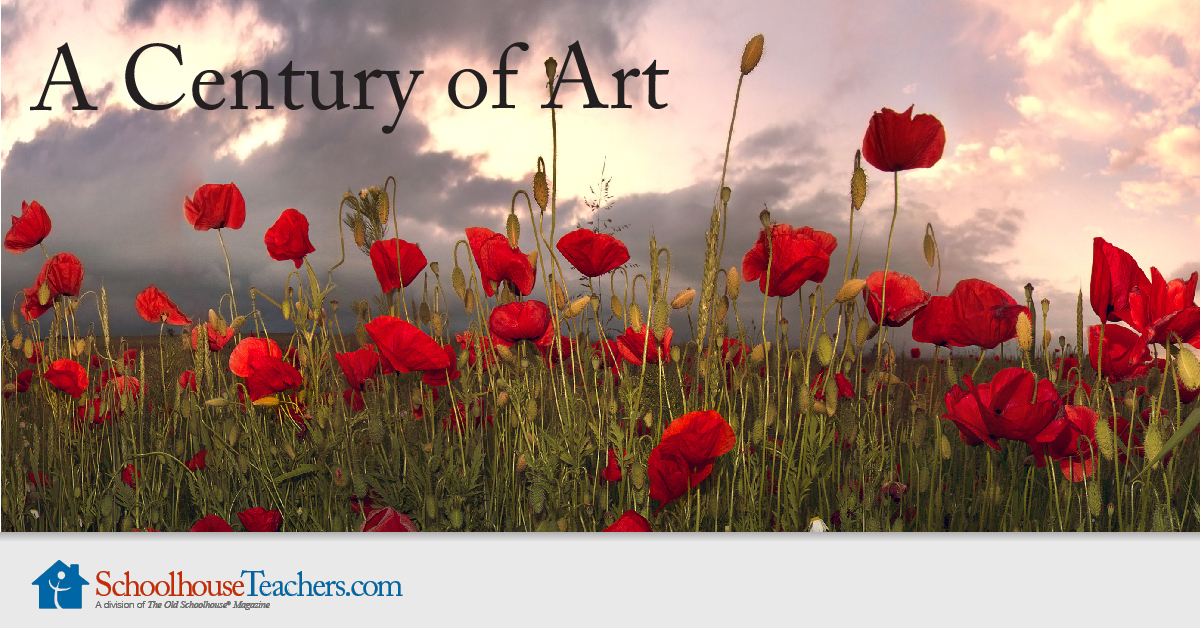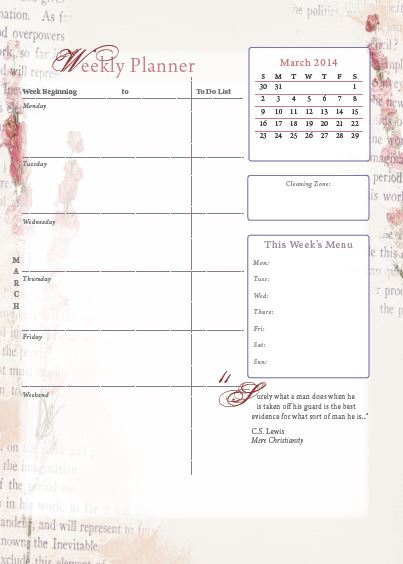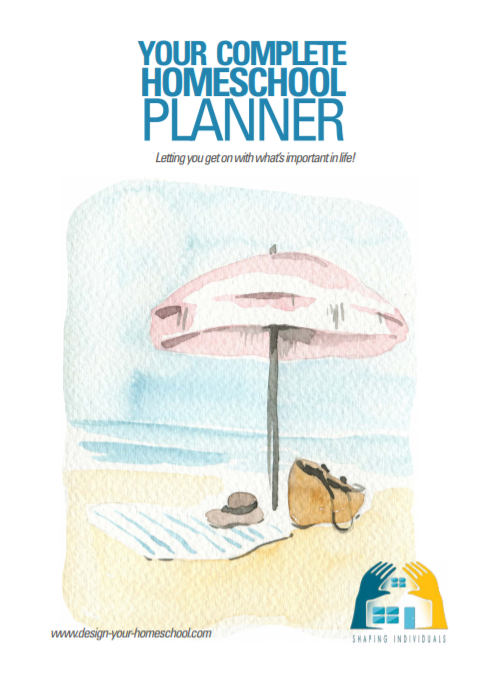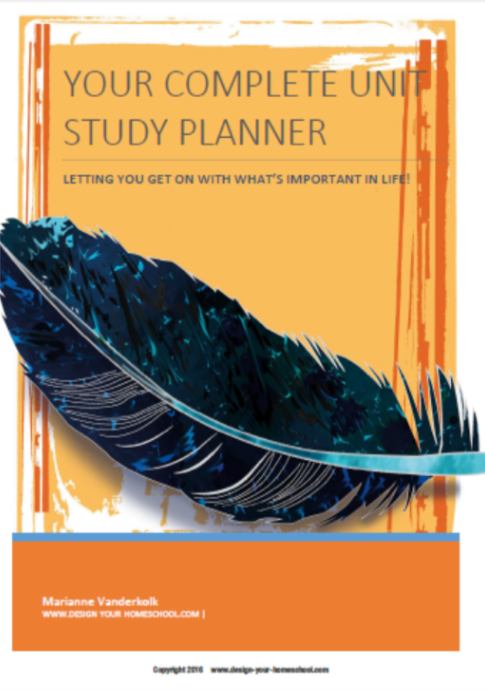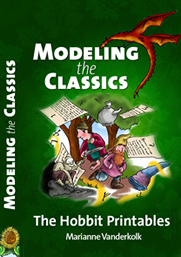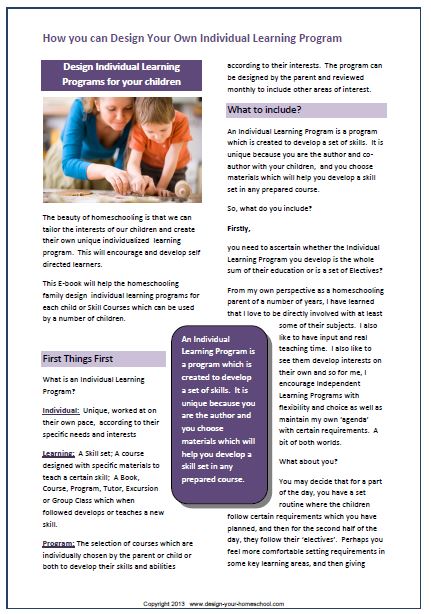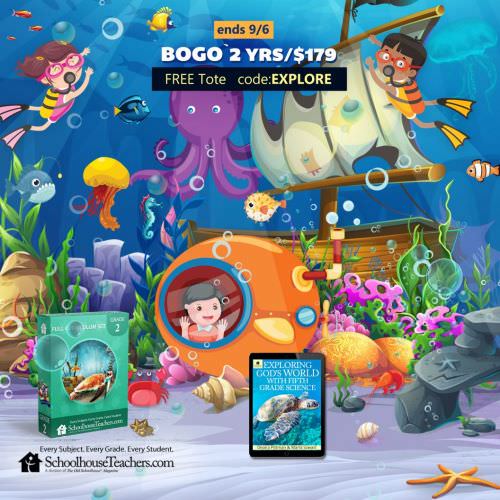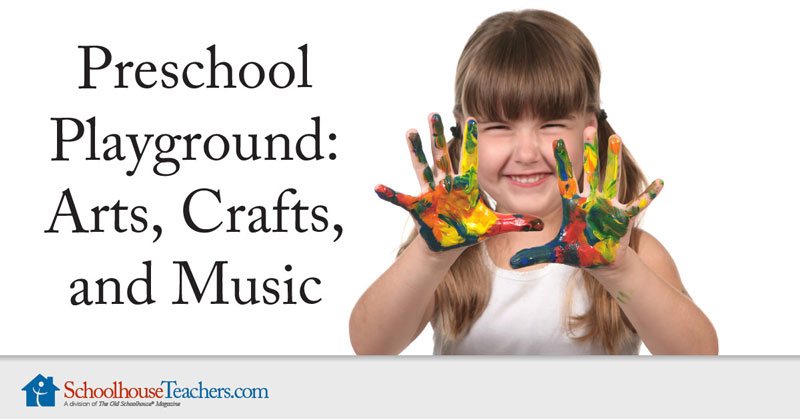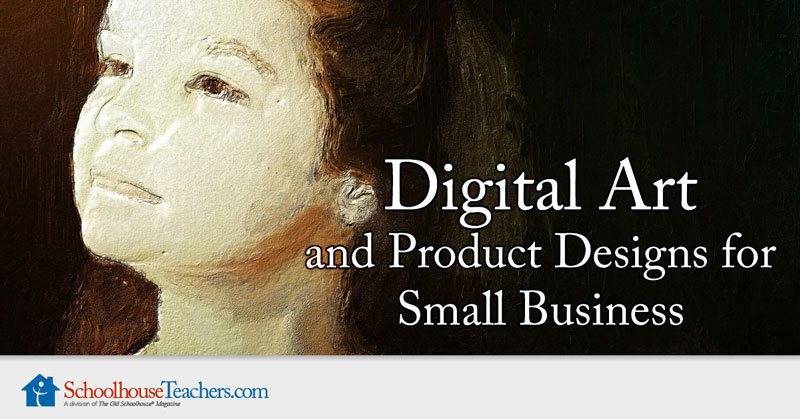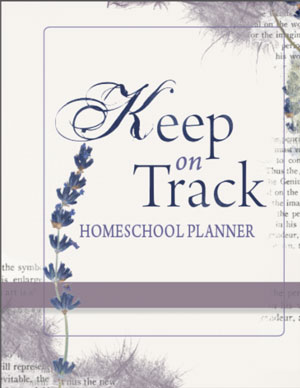The Charlotte Mason Method: What Homeschoolers Love
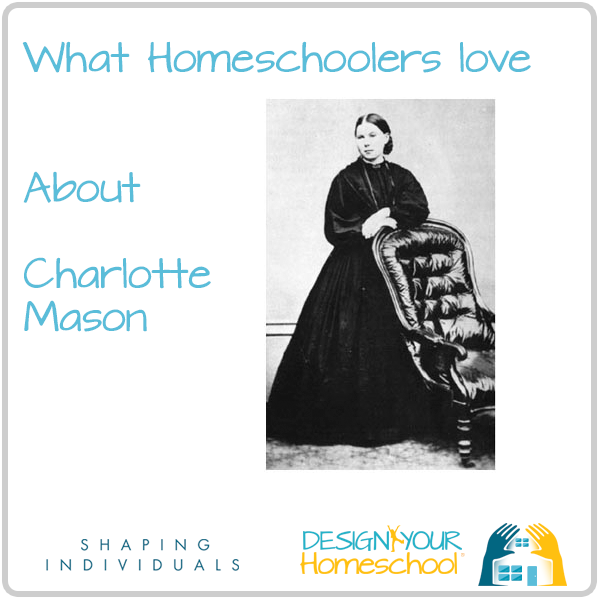 |
Related PagesDesign Your Charlotte Mason Approach Charlotte Mason Method in our home Helpful Books on Charlotte Mason Curriculum based on Charlotte Mason's Philosophy and Methodology |
There's something so real and warm about Charlotte Mason methods that many homeschoolers are drawn to her style of education. It is described as a "gentle approach" but this should not cause us to think of it without depth or vigour or that it doesn't require too much of the child. That would not be true at all!
In fact, since she has such a high regard for children as 'born persons' - she is not willing to dumb things down for them or offer them worthless 'twaddle'. She does not want them to live in a 'childish' environment, but wants to offer them a wide range of knowledge, a generous curriculum. She wants their minds to feed on ideas - so that they can make wise judgements to accept or reject them. She wants to offer children variety to encourage curiosity and the Charlotte Mason method is very much a literary approach using the best literature. She insists on training them with good habits of attention, requiring retelling after one reading as she understands that knowledge is not assimilated until it has been reproduced.
On a previous page, I listed Charlotte Mason's 20 principles and the Three Instruments of Education, - so let's now see how she has applied this in her own methodology.
This Charlotte Mason Homeschooling Course is a 16-week class by Cindy West for SchoolhouseTeachers.com. It is designed to help parents interested in learning how to implement aspects of the Charlotte Mason method into their homeschooling. Practical tips and even homework for parents is given!
Charlotte Mason Method
From my understanding, reading and research, this is a quick summary of some of the methods employed by Charlotte Mason. Each of these areas are expanded when "Designing your own Charlotte Mason approach."
Living Books
Living books should present the child with real life; the teacher should not interfere with a lot of "talk."
This is really why a Charlotte Mason education is also sometimes described as a "Living Books" education. In all subject areas, we are to present them with "twaddle-free" reading. We are to offer them a large variety of books - reading literature - fiction and non-fiction, history, poetry, science, math, languages.
"For this reason we owe it to every child to put them in communication with great minds that he may get at great thoughts; with the minds, that is, of those who have left us great works; and the only vital method of education appears to be that children should read worthy books, many worthy books." Charlotte Mason, A Philosophy of Education, 1925.
Literature that Charlotte Mason suggested was often related to the historical time period. See my living book recommendations for teaching history. These lists incorporate living books for each time period.
Composition
Composition was taught using oral Narration followed by written narration when the child is about ten.
They should narrate and they will compose later, readily enough; but they should not be taught 'composition'. (Home Education by Charlotte Mason. p 247)
"Narration is an art, like poety-making or painting, because it is there, in every child's mind, waiting to be discovered, an is not the result of any process of disciplinary education." (Home Education, p231)
Copywork
Charlotte Mason method of copywork is a simple tool of copying words, sentences and paragraphs to help focus on sentence structure, grammar and punctuation.
Copywork, Dictation and Narration are all a part of what I advocate in the steps involved in teaching writing.
Dictation
Spelling learnt through dictation - child views passage, isolates words which may give him trouble, pictures the word in his mind, and when ready, writes the passage which is dicatated clause by clause, repeated only once.
Geography
Geography was always tied in with teaching history. The local landscape - what was described in history lessons would be used as a miniature lesson of the whole world. This series below enables you to easily coordinate geography with history as you choose a map connected to the readings.
Example of a Geography Weekly Schedule
- Day 1: Study the New Country or State.
- Complete the Fact Table. Locate and label each new location on the dashed, black and white map. Draw all of Europe or the United States that has been studied thus far.
- Days 2, 3: Locate and label each new location onto the dashed, black and white map. Draw all of Europe or the United States studied thus far.
- Day 4: List, from memory, all locations studied thus far.
Art
In this course from SchoolhouseTeachers.com each lesson explores the unique elements that contribute to the particular style, including the history, and introduces students to key artists of the time period. Each also includes an art project to familiarize students with the style. Numerous opportunities for students to explore one or more styles more deeply are provided.
Charlotte Mason advocated viewing art prints, 'picture-painting'-focus on detail, committing them to memory, focussing on one artist at a time. She mainly did it through "picture talks" in which the art speaks to your child. The child would view the art work and then narrate back what was in the painting.
I enjoyed reading what Karen Andreola writes about art appreciation - the Charlotte Mason way.
Of course, ideally you would want to view the real art work, and taking time to do that is so worthwhile when possible. I'm so thankful, though for books which focus on an artist and bring the artist's style, techniques to life. Some of those books include,
and others in that series.
Meet the Masters is another curriculum which we have used that focusses on the life of the artist and then copying the artist by engaging in an art project in the style of the artist. This is an excellent program.
The Knowledge of God
The Knowledge of God: Bible - the foundation living book - to give children their knowledge of God - the most important lesson.
How did Charlotte Mason teach Bible and how can you use this as you design your own Charlotte Mason Approach? Read more about Charlotte Mason teaching Bible here.
Teacher Directed
Charlotte Mason chose the materials that the child would read.
Short Lessons
Insisting on short lessons is excellent. It begins with 10-15 minutes when children are young and increases with age. It is closely related to the next point as Charlotte Mason would not want children to dawdle over their work as it taught them to be distracted. If they stopped to focus it is more important to shift to another task rather than have the possibility of them learning to lose focus and waste time.
Habits are Taught
Young children should be spared the labour of decision-making; habits must be actively formed by parents and teachers to make many of our actions second nature - habit of attention; habit or application; habit of thinking; habit of imagining; habit of remembering; habit of perfect execution; moral habits of obedience, truthfulness;
Free Afternoons and Evenings
The beauty of Charlotte Mason is that if the children are kept focussed on their tasks in small chunks of time and they have not learned the habit of inattention - it is easily possible to have free afternoons and evenings for nature walks, reading, handcrafts and following hobbies.
Time Outdoors and Nature Walks
|
Children should spend a great deal of time outdoors - in nature; using their senses and take mental pictures of what they see, observe as well as record it in a nature journal. If you love the idea of nature walks and journaling - you will fall in love with this book - which I describe more in detail on this page - Keeping a Nature Journal. Charlotte Mason did not leave us with an idea and then let us figure it out on our own. This is what she writes, |
 |
“We must assist the child to educate himself on Nature’s lines, and we must take care not to supplant and crowd out Nature and her methods with that which we call education. Object-lessons should be incidental; and this is where the family enjoys a great advantage over the school. The child who finds that wonderful and beautiful object, a “paper” wasp’s nest…has his lesson on the spot from father or mother.” –Parents and Children, pg. 182
and on my Nature Study page - I describe in more detail exactly what nature study can look like and how the outdoor life for children can strengthen their powers of observation.
Do you have a keen observer in the family? Get them to take a photo and upload it to our online nature journal!
Memorization of Poetry
Memorization of poetry - not by repetition, but by listening and imagining the scene many times over. Charlotte Mason would encourage studying different poets each for a length of time.
Charlotte Mason methodology in our home.
Here's how we have used Charlotte Mason methodology in our homeschool.
Charlotte Mason Method - in her words
The Books below will give the reader a greater understanding of who Charlotte Mason was and how you can implement her philosophy and methods into your homeschool.
This is where it all begins for the Charlotte Mason homeschooler---the original 6-volume teaching reference by the founder of the homeschooling movement! Mason's philosophy of educating children is spelled out in each one of her insightful books. Learn from this education pioneer how to teach children under 9 years old, fulfill your educational role as a parent, develop a curriculum, improve your children's character and conscience, shape their personality, and foster creative learning.
Books on the Charlotte Mason Homeschool Approach
For the Children's Sake was the first book I read on Homeschooling and still remains one of my favourites! This is one of the classic books on Charlotte Mason's ideology. In it, Susan Schaeffer Macauley provides us with a warm and throught provoking conversation on the educational principles for school and home. She highlight's Charlotte Mason's view of children as legitimate people, and denounces the "twaddle" of lightweight fluff that today seems to fully occupy children.
My Top Picks on Charlotte Mason Method
A Charlotte Mason Companion: Personal Reflections on The Gentle Art of Learning
By Karen Andreola / Charlotte Mason Research
Why are the time-tested principles of respected 19th-century British educator Charlotte Mason so popular with homeschoolers? Because they work! Andreola shares her experiences in homeschooling the "Charlotte Mason way." Discover how to teach children to think independently, retain what they learn, and communicate clearly by narrating what they read in "living books." 384 pages, softcover from Charlotte Mason Research.
Nature Study with Charlotte Mason
Charlotte Mason and Classical Approach
 |
This book offers a combined Charlotte Mason - Classical Education approach to education, which will develop a natural love of learning in children. |
Related Pages on Charlotte Mason Method
If you're keen to design your own Charlotte Mason Approach you will enjoy:
- Design your CM Approach
- Charlotte Mason Knowledge of God - Bible
- Charlotte Mason History - Charlotte Mason Method in History and how to apply it in your home.
- Create your Charlotte Mason Literature - Charlotte Mason Method and how you can create your own.
